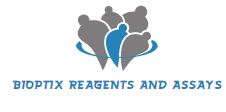Initial limb chondrogenesis offers the first differentiated tissues that resemble the mature skeletal anatomy. It is a developmental progression of three tissues.
The limb begins with undifferentiated mesenchyme-1, some of which differentiates into condensations-2, and this tissue then transforms into cartilage-3. Each tissue is identified by physical characteristics of cell density, shape, and extracellular matrix composition.
Tissue specific regimes of gene regulation underlie the diagnostic physical and chemical properties of these three tissues. These three tissue based regimes co-exist amid a background of other gene regulatory regimes within the same tissues and time-frame of limb development. The bio-molecular indicators of gene regulation reveal six identifiable patterns.
Three of these patterns describe the unique bio-molecular indicators of each of the three tissues. A fourth pattern shares bio-molecular indicators between condensation and cartilage.
Finally, a fifth pattern is composed of bio-molecular indicators that are found in undifferentiated mesenchyme prior to any condensation differentiation, then these bio-molecular indicators are upregulated in condensations and downregulated in undifferentiated mesenchyme.
[Linking template=”default” type=”products” search=”SKT-218-96″ header=”2″ limit=”190″ start=”2″ showCatalogNumber=”true” showSize=”true” showSupplier=”true” showPrice=”true” showDescription=”true” showAdditionalInformation=”true” showImage=”true” showSchemaMarkup=”true” imageWidth=”” imageHeight=””]
The undifferentiated mesenchyme that remains in between the condensations and cartilage, the interdigit, contains a unique set of bio-molecular indicators that exhibit dynamic behaviour during chondrogenesis and therefore argue for its own inclusion as a tissue in its own right and for more study into this process of differentiation.
